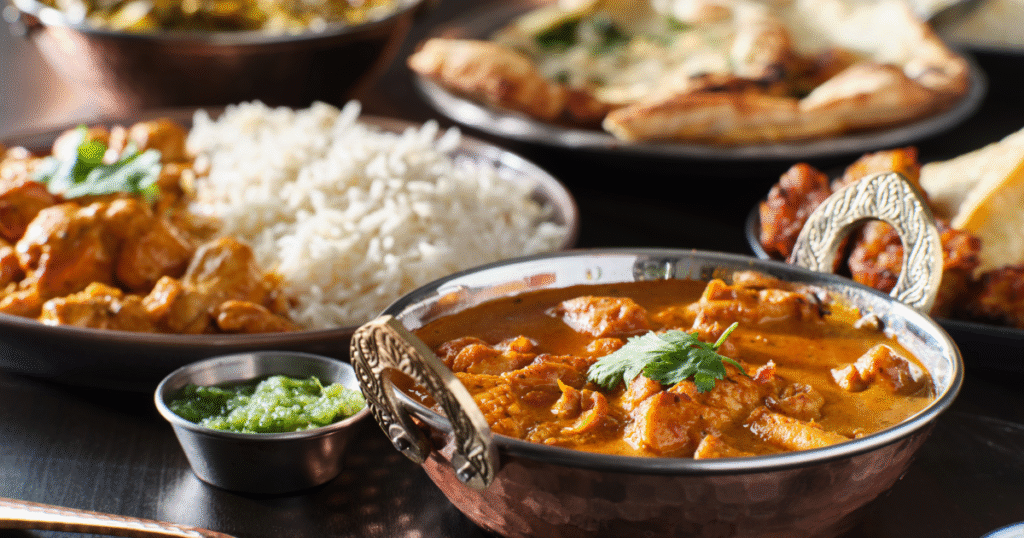
Curry As Culture – Is It Connection? Is It Nostalgia?
The Magic That Curries Hold
There’s something profoundly emotional about curry, it’s more than a dish; it’s an idea, a memory, a bridge between people and places. A ladle of curry doesn’t just fill a bowl, it fills homes with comfort, connection, and stories that simmer through generations.
Across India, curry is a language of belonging. It speaks of the soil, the seasons, and the stories that unfold around the dining table. In Kashmir, for instance, the Gushtaba, a delicately spiced lamb curry, is served as part of the grand Wazwan, a ceremonial feast that is as much about community as cuisine. Four people eat together from one large plate, sharing course after course, bite after bite, food becomes dialogue, and curry becomes a unifier.
Curry Beyond Borders
While curry is often thought of as quintessentially Indian, its spirit has travelled and transformed across continents. The British popularised “curry houses” in London; Japan adapted it into a milder, sweeter kare raisu; Thailand brought us its fiery red, green, and yellow curries rich with coconut and galangal; Malaysia has its own versions with lemongrass and tamarind; and the Caribbean celebrates goat curry infused with local heat and rhythm. Each of these is curry in essence, not identical, but emotionally familiar.
When Kitchens Became Cultural Crossroads
In Indian cities, especially after independence, migration led to something wonderful, culinary exchange. Neighbours who came from different states began sharing food, trading recipes, and adopting ingredients they had never used before. A Punjabi household might add curry leaves after tasting a South Indian neighbour’s sambar, while a Bengali might use garam masala inspired by a friend from Delhi.
A spice here, a condiment there, curries became richer, layered, and more diverse. Dishes like Navratan Korma, Shaam Savera, and Paneer Kofta reflect this beautiful blending where regional influences and local innovations coexist deliciously. Even the idea of paneer replacing meat in traditional curries speaks of India’s genius for adaptation, never imitation, always evolution.
The Curry and Bread/Rice Formula
What’s curry without its perfect partner, bread or even rice? Across the country, curry finds a companion on the plate: chhole bhature in the north, puri bhaji in the west, appam-stew in the south, parotta with salna in Tamil Nadu, and pav bhaji on Mumbai’s bustling streets, rajma-chawal, chhole chawal, sambar rice, kadhi and rice.. Each pairing is comfort food at its best. It’s a proof that when curry and bread meet, they create harmony that transcends class, geography, or language.
The Ever-Evolving Curry
Curry has always been dynamic, evolving with trade routes, colonisation, migrations, and modern kitchens. From rustic clay pots to sleek induction stoves, from hand-pounded masalas to pre-ground spice blends, the form has changed but the soul remains the same.
Curry will keep evolving in fusions that surprise us, in curries that tell new stories, and in kitchens where cultures continue to meet. Because curry, in the end, is not just food. It is culture itself. It’s fluid, inclusive, aromatic, and endlessly comforting.
Curry As Passion
I have always been passionate about curries. Understanding the nuances, the flavours, textures, the order in which ingredients are introduced.. There is so much complexity in every bowl that finally goes on the plates. This motivated me to write the book, Romance of the Indian Curry – 365 Flavours for the Year.
Here’s the link to buy the book: https://amzn.in/d/eanSqyv